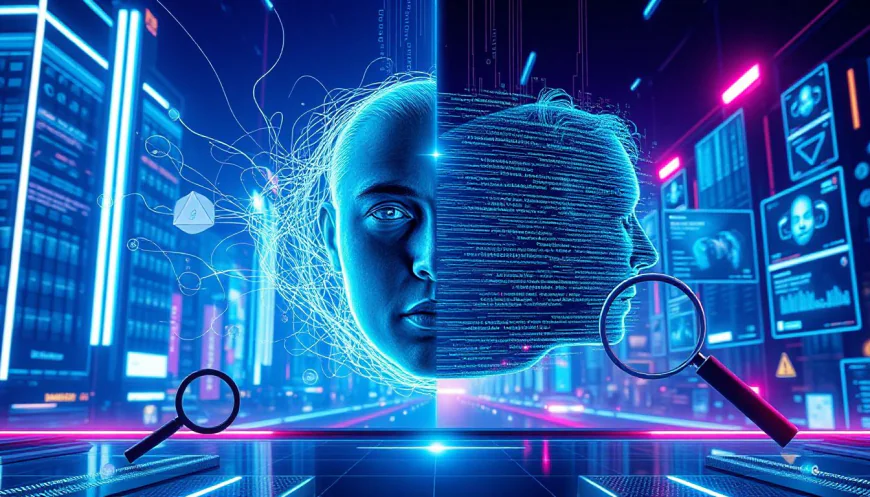Deepfakes and Truth: Navigating Misinformation in the Age of Synthetic Media
Deepfake technology has become a hot topic in recent years. Its rapid growth means most of us have heard about synthetic media and its ability to create fake videos that look real. These tools are now more accessible than ever, putting powerful production in anyone's hands. While deepfakes can be fun for movies, comedy, or education, they also pose serious risks. Fake videos can spread false information, manipulate opinions, and even damage lives. Because of this, society faces a big challenge: how do we stop misinformation from spreading while still embracing new technology? Finding solutions means understanding deepfakes, recognizing their dangers, and staying one step ahead.

Understanding Deepfakes: Technology and Evolution
What Are Deepfakes?
Deepfakes are videos or images made with artificial intelligence (AI) that show people doing or saying things they didn’t actually do. To make these videos, creators use a type of AI called generative adversarial networks (GANs). These neural networks analyze real footage and produce highly convincing fake content. The result can be a celebrity saying something they never said or a politician making a statement they never gave.
The Evolution of Deepfake Technology
Deepfake tech started small, with simple videos that were easy to spot. Over time, it became more advanced, producing highly realistic images. One early milestone was using AI to swap faces in videos, which used to be obvious but now can fool most viewers. Recently, algorithms have improved so much that even experts struggle to tell real from fake. This constant progress makes it easier for anyone to create convincing synthetic media.
The Accessibility of Deepfake Tools
Today, building deepfakes is no longer limited to tech labs. Apps and software are available for free or cheap online. Many users can generate content with just a few clicks. While this opens up new creative outlets, it also makes misuse easier. People with bad intentions can create fake videos to deceive, harass, or spread false stories.
The Misinformation Threat Landscape
How Deepfakes Fuel Disinformation Campaigns
Deepfakes are used to lie in politics, damage reputations, or make celebrities appear guilty of things they didn’t do. For instance, some fake videos of politicians giving false speeches may influence elections. These videos can seem real enough to trick viewers and cause confusion. The psychological impact is huge because we trust what we see on screen, making deepfakes a serious weapon for spreading false info.
Risks to Trust and Public Discourse
When fake videos flood the media, trust drops. People start to question everything—news, videos, even their own experiences. This erosion of trust can lead to chaos, like political unrest or violent protests. Misleading footage might stir up conflict or ruin careers. The more fake videos circulate, the harder it is to know what’s true and what’s fake.
Challenges in Detecting Deepfakes
Detecting deepfakes is not easy. AI creators are constantly refining their work to avoid detection. Current tools can catch some fakes but often miss the most sophisticated ones. As creators learn new ways to hide flaws, detection tech has to improve too. It’s a high-stakes game of cat and mouse—who will catch up first?
Combating Deepfake Misinformation
Technological Solutions for Detection
Scientists and tech companies are working on AI-based tools to spot fake videos. Some, like Microsoft’s Video Authenticator, analyze images for signs of manipulation. Others build algorithms that compare videos to authentic sources. But these tools aren’t perfect, and deepfake creators find new ways to beat them. Continuous research is essential to stay ahead.
Legal and Policy Measures
Laws are starting to catch up. For example, the Deepfake Accountability Act suggests holding creators responsible for malicious videos. Governments debate new rules to prevent harm without infringing on free speech. Enforcing such laws can be tricky, especially across borders. Still, legal measures are a key part of the fight against fake media.
Educating the Public
Making people aware is just as important as technology and laws. By learning how to recognize fake videos, everyone can become a filter of truth. Tips like checking multiple sources, analyzing suspicious signs, and questioning the context help. Media literacy programs teach us to think critically before sharing or believing what we see.
Ethical Considerations and Responsibilities
Creator and Platform Responsibilities
AI creators should consider the ethical impact of their tools. Developers can add safeguards to prevent misuse. Social media sites have a duty to identify and remove harmful deepfakes. They must balance free flow of content with protection against deception.
The Role of Governments and International Bodies
Global cooperation is vital. Countries need to work together to set standards for responsible AI use. International agreements can help control cross-border misinformation and fake content. Without collaboration, fake media can flow freely and cause chaos worldwide.
The Future of Deepfakes and Truth
Emerging Trends and Innovations
Researchers are developing better detection tools that learn from new deepfakes. Positive uses of synthetic media, like virtual assistants and realistic film effects, are growing. As technology advances, so does our ability to spot fakes and create more responsible media.
Preparing for a Misinformation-Resilient Society
Building trust requires transparency and open communication. Promoting honesty online and holding creators accountable make a difference. A society that values truth and learns to verify content can withstand the onslaught of fake videos.
Conclusion
Understanding deepfakes and their role in spreading false information is more important than ever. We need a mix of technological tools, strong laws, and smarter audiences to fight back. Staying alert, verifying sources, and supporting responsible AI use will help maintain trust in our media.
The fight against misinformation isn’t over, but we can win it. By working together, we protect the truth and keep society informed and safe. Stay aware, stay skeptical, and always ask: is this real?



 VARSHITHA
VARSHITHA